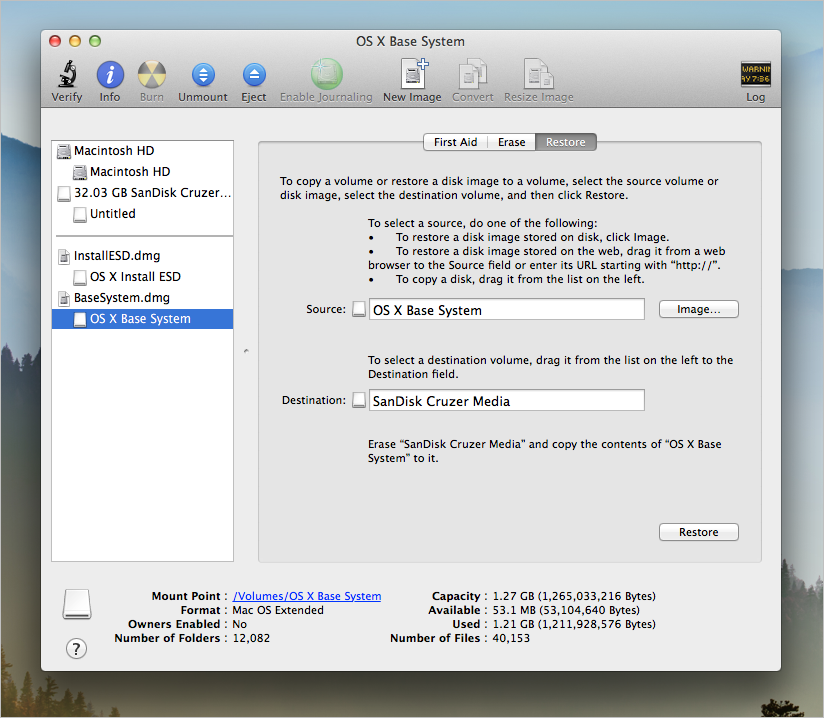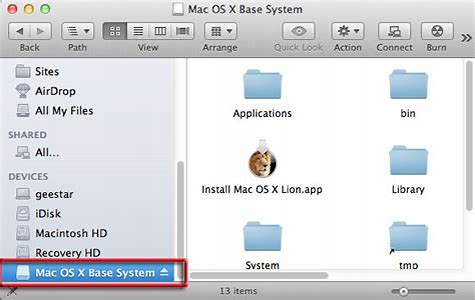You must have heard of the macOS base system, but do you know the exact function of the macOS Base System and how to fix some wrongs with the macOS base system? Don't worry; this post will help you learn more. Just keep reading.
The Definition of macOS Base System
macOS base system is the recovery partition on your Mac. When the user needs to reinstall macOS to play a role, this reinstallation of the system mainly occurs when the system does not work or needs to install a different version of macOS. Additionally, the macOS base system can troubleshoot and resolve Mac issues while users are using Disk Utility. If something goes wrong, the device is returned to its previous state by restoring from Time Machine.
The macOS base system is a read-only disk image about 2 GB in size that contains all the basic information your Mac needs to function correctly. The user cannot see the macOS base system on a regular boot, but when the user boots into Recovery Mode using Command + R on an Intel-based Mac, the base system does.

When to Use the Mac Base System
System failure is inevitable when we use a Mac. When your Mac keeps crashing, stopping, or popping up error messages, the device may need to use the base Mac system to assist in restoring or restoring your macOS.
There are several situations in which the Mac base system is used:
- Failed to activate.
- Disk problem.
- Operating system problem.
Therefore, the macOS base system is only considered when the user attempts to restore, restore, or repair the Mac. The macOS base system essentially fixes our Mac's backup when the device is reinstalled with macOS.
macOS Base System VS Macintosh HD
Macintosh HD is what users launch when they turn on macOS on the device. The macOS base system is a separate volume that allows users to restore macOS to their Mac with just a few clicks when macOS fails to work correctly. The macOS base system is also a backup for users to repair their Macs, reinstall macOS, and use other low-level utilities.

Possible Issues with macOS Base System - How to Solve Them
Equipment can malfunction due to incorrect operation. But it is also possible for users to encounter errors when clicking on the macOS base system, such as showing that the drive is locked or out of space. Below, we will discuss the problems with the basic macOS system and will give solutions.
- 1. There is Not Enough Free Space in OS X Base System
- 2. macOS Base System Has the Size of Your Mac Hard Drive And Shows That 'The disk is locked'
Problem 1: There is Not Enough Free Space in OS X Base System
When we install macOS using the Mac virtual machine tool, we may encounter glitches like "Not enough free space on OS X Base System" on the device. We can fix this by wiping the container and adding a new partition to store the macOS installer. The following are the detailed steps:
Step 1. In the macOS installer window, click "Utilities" on the menu bar and select "Disk Utility".
Step 2. Select the main container under the name and click "Erase".
Step 3. Name the partition, and select APFS as the Format for Mac running macOS 10.13 High Sierra or later. If your macOS version is earlier than macOS 10.13 High Sierra, choose "Mac OS Extended (Journaled)" instead. Select" GUID Partition Map" as the scheme.
Step 4. Click "Erase." Then close the window and install the Mac OS to the new partition.
Problem 2: macOS Base System Has the Size of Your Mac Hard Drive And Shows That 'The disk is locked'
Occasionally, a user may accidentally restore a Macintosh HD to the macOS base system and find the disk locked. The solution to this problem will be given below. Steps to resolve the "disk is locked" issue:
Step 1. You need to restart your Mac and immediately press and hold the "Option + Command + R" buttons on your keyboard until you see an animation appear on the screen.
Step 2. In the utility window, click "Disk Utility".
Step 3. Select the macOS base system and click "Erase".
Step 4. If the device is macOS 10.13 High Sierra or later, you will need to name the drive Macintosh HD and make sure it is formatted as APFS. If the device is not this version, you must choose Mac OS Extended (Journaled). And use the GUID partition map as the scheme.
Step 5. Click "Erase" and exit Disk Utility. Then reinstall macOS and need to select Macintosh HD as the drive.
Was This Page Helpful?
Dany is an editor of EaseUS who lives and works in Chengdu, China. She focuses on writing articles about data recovery on Mac devices and PCs. She is devoted to improving her writing skills and enriching her professional knowledge. Dany also enjoys reading detective novels in her spare time.
Cedric Grantham is a senior editor and data recovery specialist of EaseUS. He mainly writes articles and how-to tips about data recovery on PC and Mac. He has handled 10,000+ data recovery cases and is good at data recovery of NTFS, FAT (FAT32 and ExFAT) file systems, and RAID structure reorganization.
Related Articles
-
What Is SSD TBW and How to Check TBW on SSD
 Daisy/2025-06-30
Daisy/2025-06-30 -
What Is MSI Boot Menu [Detailed Info]🔥🔥
 Jerry/2025-06-30
Jerry/2025-06-30 -
What Is DOCP? | All Info You Should Know
 Jerry/2025-06-30
Jerry/2025-06-30 -
What is AMD CPU fTPM? Everything You Need to Know
 Daisy/2025-07-04
Daisy/2025-07-04